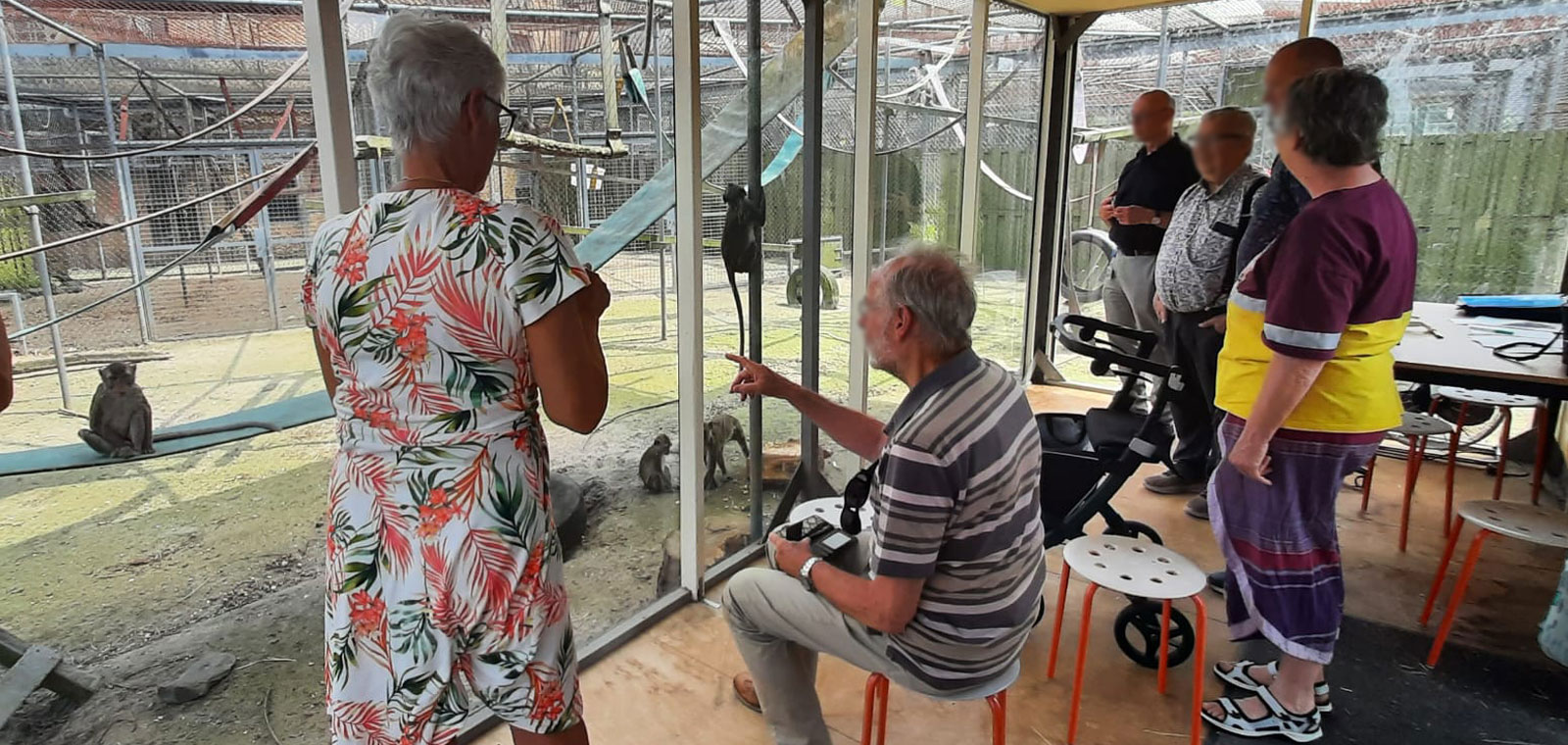
On Thursday, June 27, several Parkinson’s patients and their companions visited the BPRC for presentations, a guided tour, and practical demonstrations. This event was organized as part of Open Week 2024 for signatory institutions of the Dutch Transparency Agreement on animal research, and the Patient Discovery project launched by the European Animal Research Association.
After getting to know each other briefly over a cup of coffee, attendees learned more about the BPRC in general, and how we ensure our monkeys are cared for in a proper and compassionate way, for which strict ethical standards are followed. This was followed by presentations about past and present research on brain again and diseases, such as Parkinson’s disease. This research not only involves monkeys, but a lot of research is also performed with tissues from our biobank, and non-animal methods, such as advanced cell culture models.
After an informative theoretical morning and an informal chat over lunch, the group was given a tour of the grounds with the enclosures. It was a warm day, so many monkeys showed themselves outside. Back in the research building, a demonstration was given to show and experience how monkeys are trained for various tasks. The last demonstration was a visit to the laboratories to examine brain samples, and to see at first-hand how some techniques, that were discussed in earlier talks, are employed in a practical setting.
Both participants and involved BPRC researchers looked back at a positive experience in which they learned a lot from each other. Although some attendees were initially uncertain about monkey research and what they were going to see, they left with an utmost positive feeling about how and why these animal studies are carried out.
This positive event demonstrates the importance of engaging people with various conditions in the science behind their condition, and the role that animal research can play in this process.

